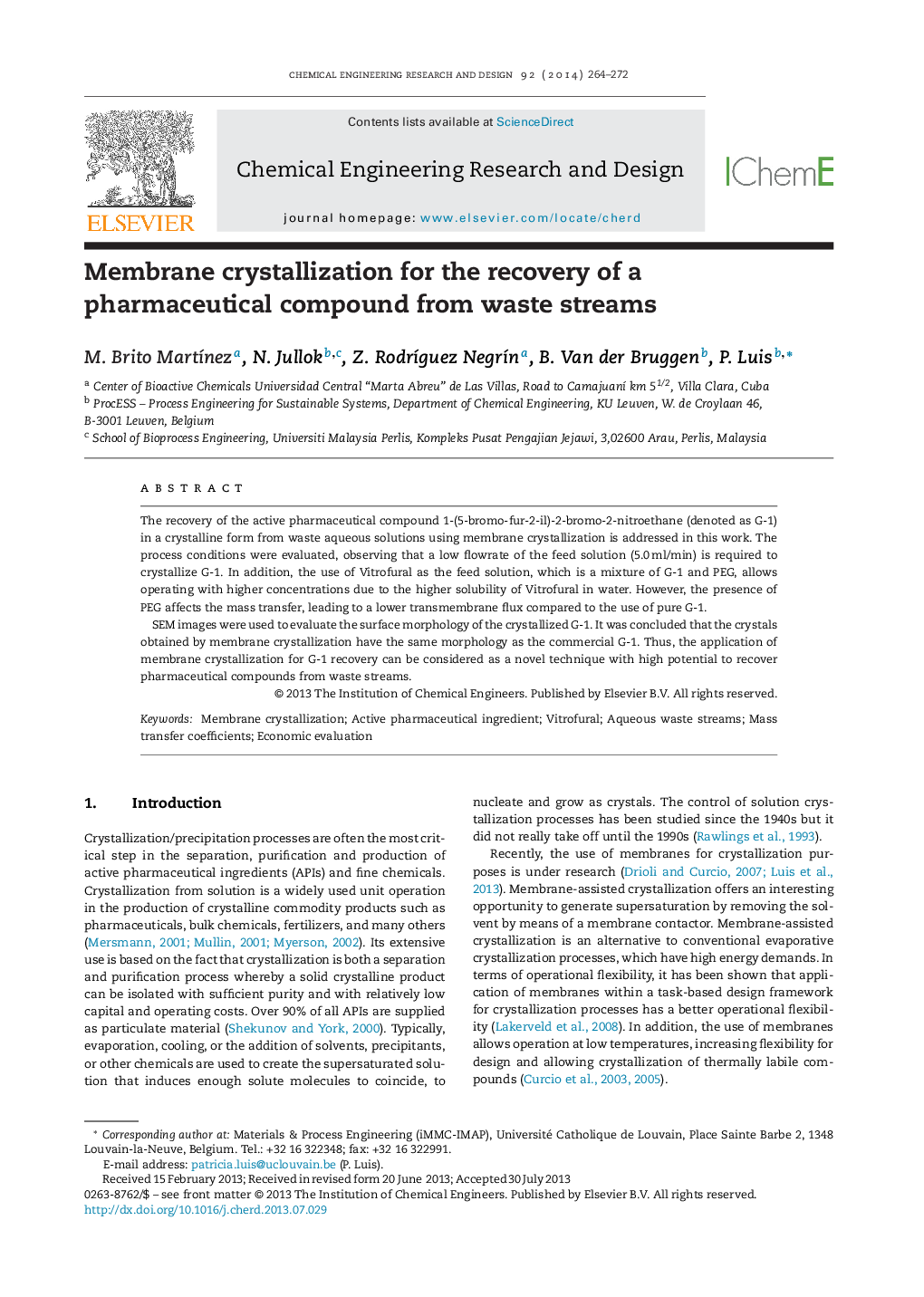| Article ID | Journal | Published Year | Pages | File Type |
|---|---|---|---|---|
| 621315 | Chemical Engineering Research and Design | 2014 | 9 Pages |
•Membrane crystallization allows the recovery of the compound G-1 from waste streams.•High flowrates in the feed side impedes the crystallization of G-1.•The main resistance to mass transfer is caused by the osmotic solution.
The recovery of the active pharmaceutical compound 1-(5-bromo-fur-2-il)-2-bromo-2-nitroethane (denoted as G-1) in a crystalline form from waste aqueous solutions using membrane crystallization is addressed in this work. The process conditions were evaluated, observing that a low flowrate of the feed solution (5.0 ml/min) is required to crystallize G-1. In addition, the use of Vitrofural as the feed solution, which is a mixture of G-1 and PEG, allows operating with higher concentrations due to the higher solubility of Vitrofural in water. However, the presence of PEG affects the mass transfer, leading to a lower transmembrane flux compared to the use of pure G-1.SEM images were used to evaluate the surface morphology of the crystallized G-1. It was concluded that the crystals obtained by membrane crystallization have the same morphology as the commercial G-1. Thus, the application of membrane crystallization for G-1 recovery can be considered as a novel technique with high potential to recover pharmaceutical compounds from waste streams.
